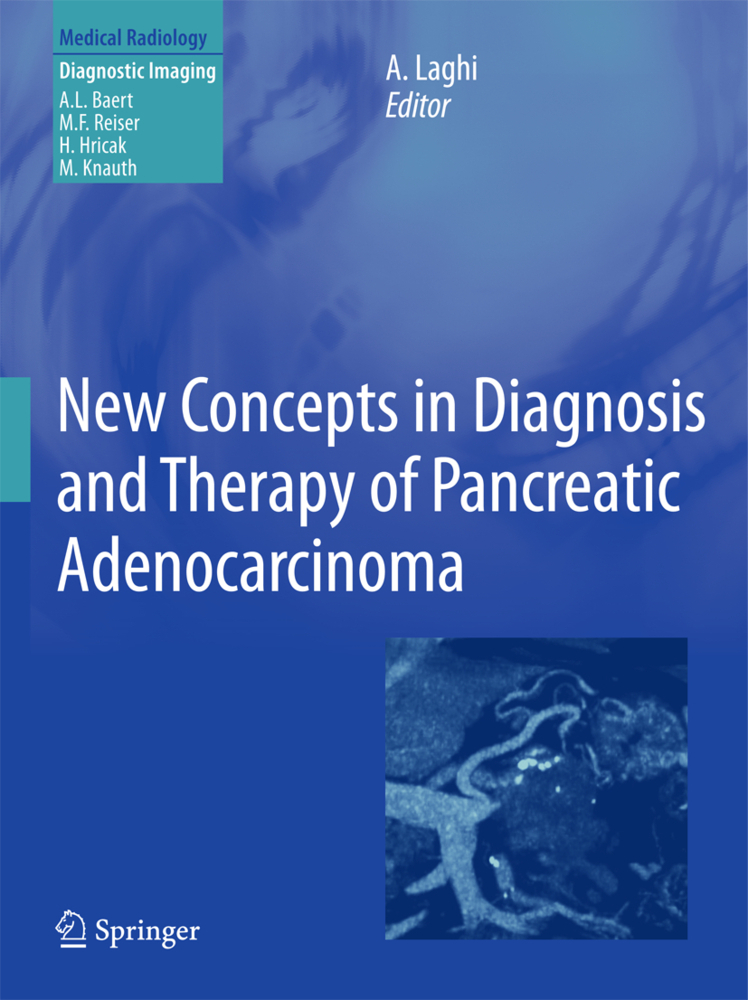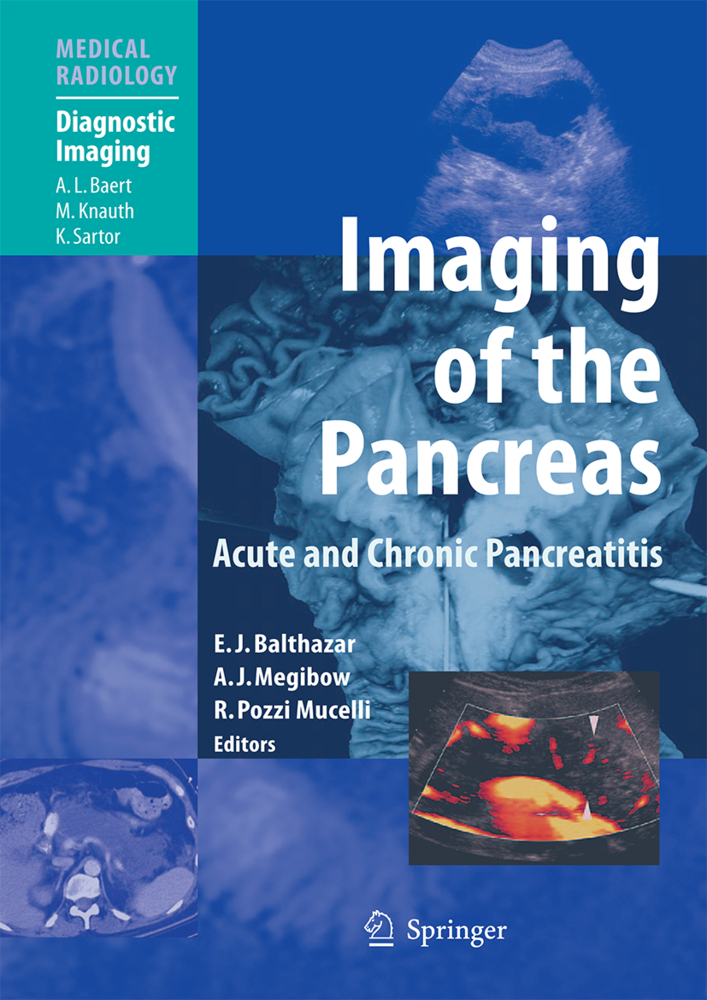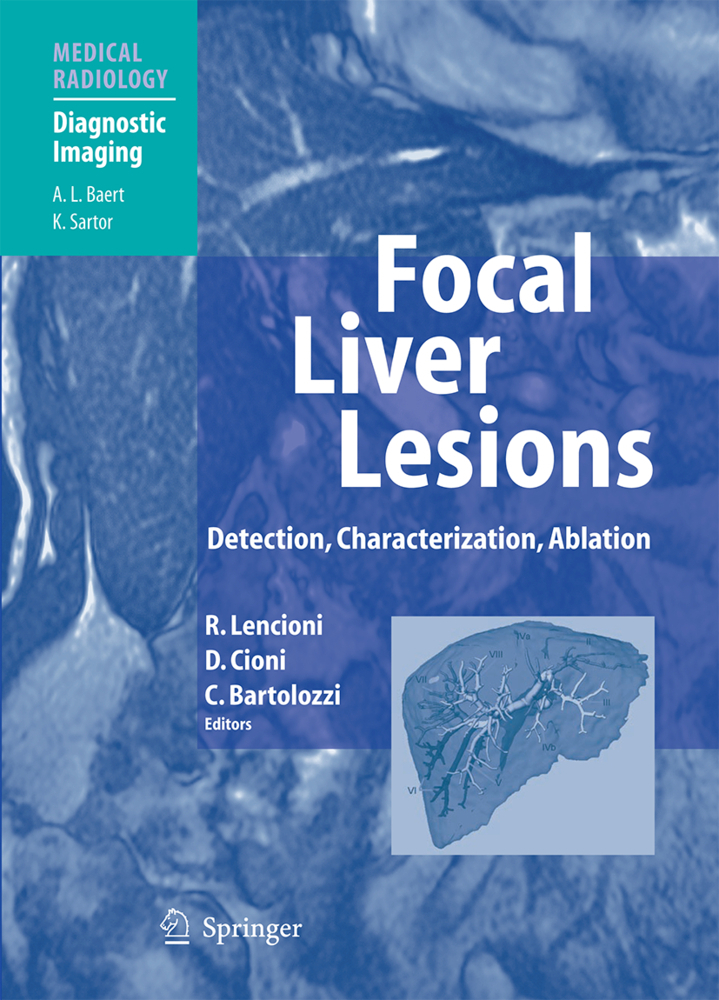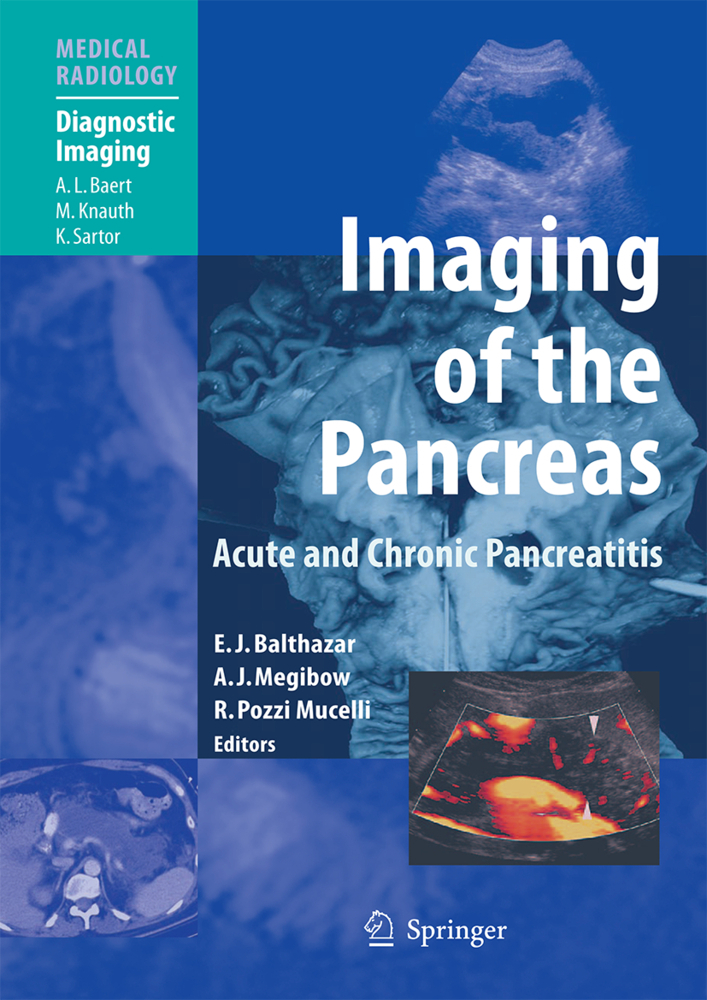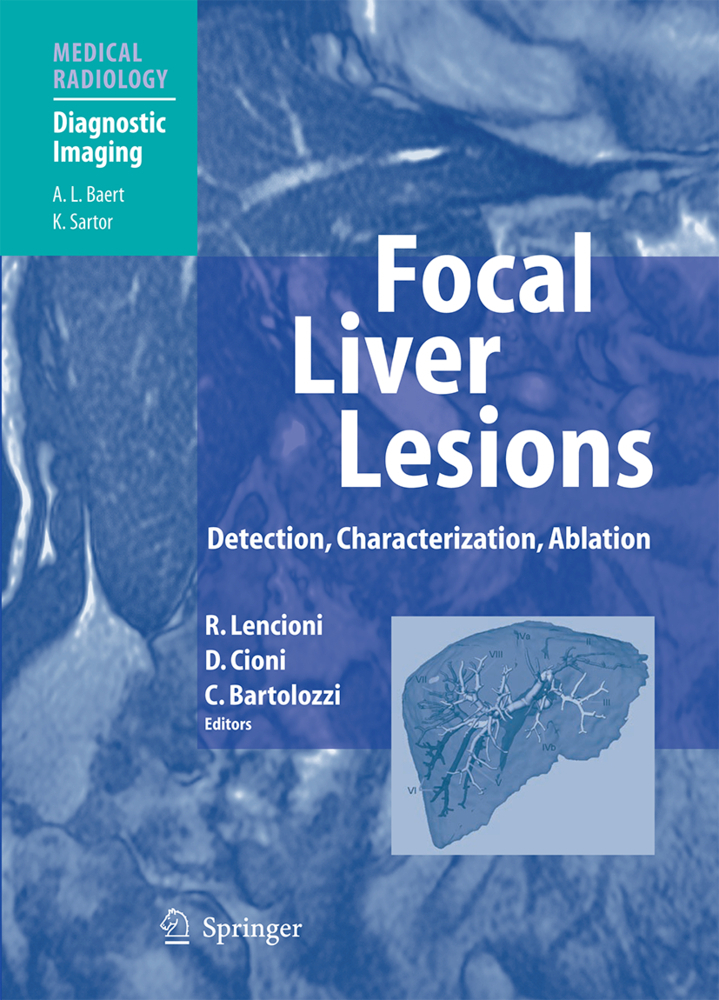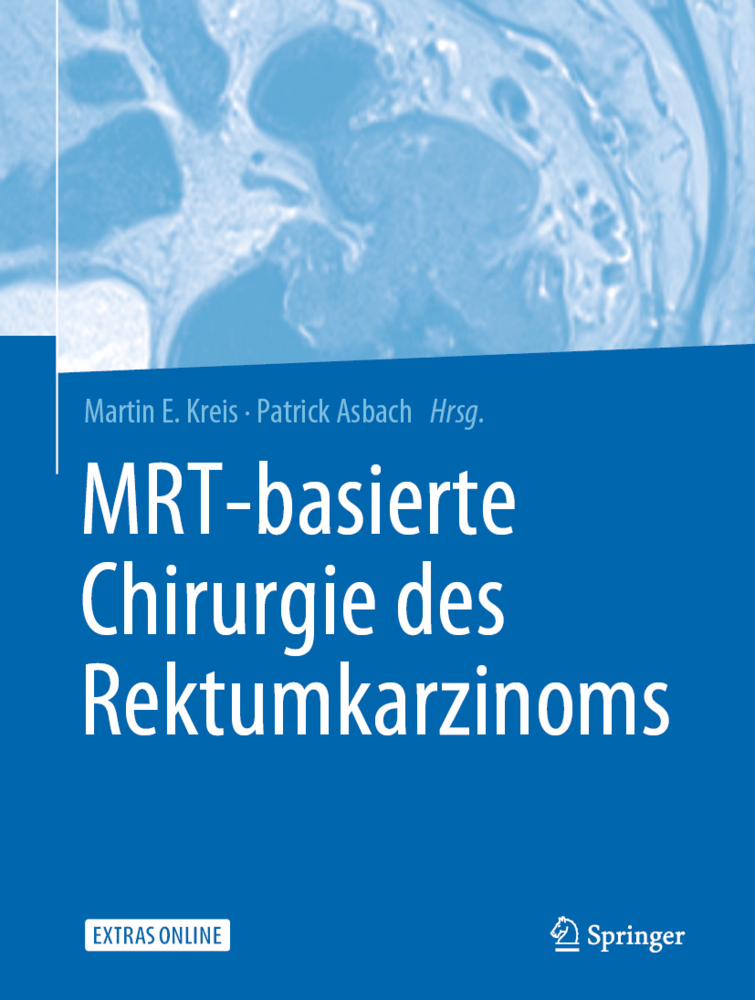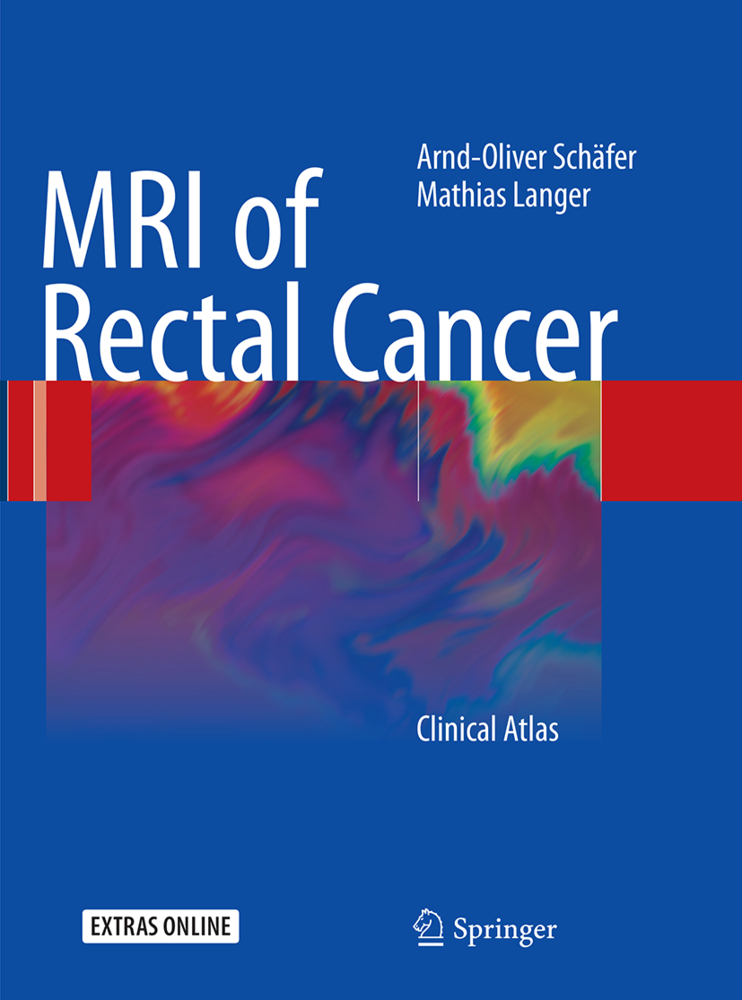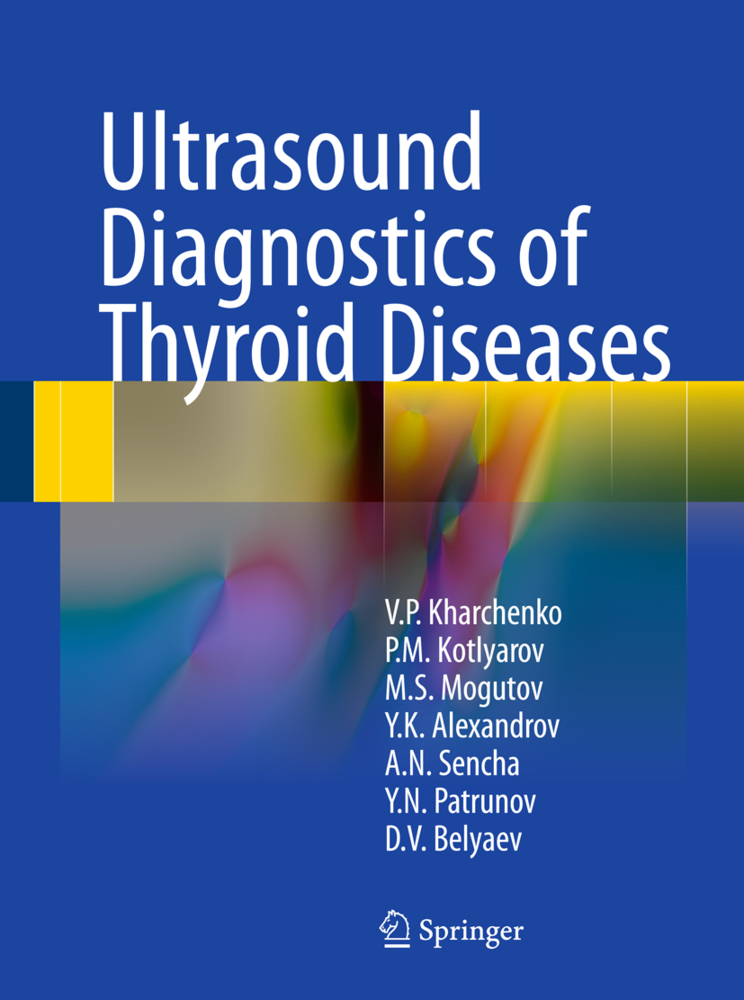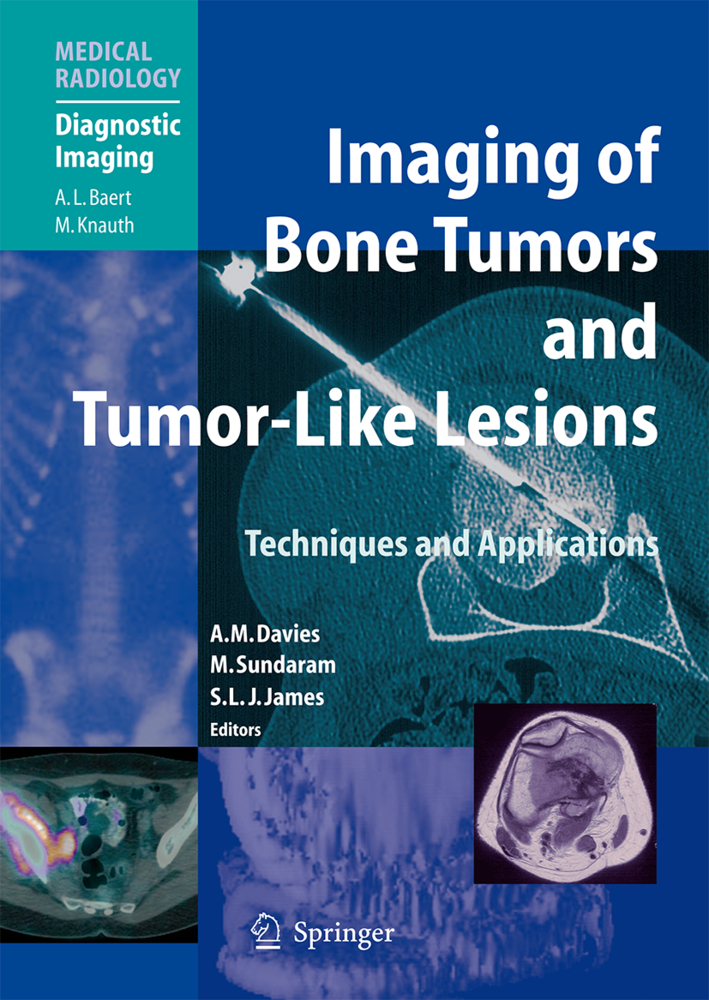New Concepts in Diagnosis and Therapy of Pancreatic Adenocarcinoma
This book adopts a multidisciplinary approach to examine in detail a range of interesting new concepts in the diagnosis and therapy of pancreatic adenocarcinoma. It is divided into three parts. The first part provides an epidemiological and clinical overview of the disease, followed by an update on pathological findings, including new discoveries in the area of molecular biology. The second part, on diagnosis, offers detailed and comprehensive information on the advantages and disadvantages of different imaging techniques, including nuclear medicine and endoscopic ultrasound. The concluding part gives a panoramic overview of the various therapeutic options, from surgery to chemotherapy and palliative approaches based on interventional endoscopy and radiology. This book will be a valuable source of information for clinicians involved in the management of pancreatic adenocarcinoma and for all who are interested in updating their knowledge of the disease, including fellows and senior residents.
1;New Conceptsin Diagnosisand Therapy of Pancreatic Adenocarcinoma;3 1.1;Foreword;5 1.2;Preface;6 1.3;Contents;8 1.4;Part 1: Epidemiology, ClinicalAspects and Pathology;10 1.4.1;Epidemiology, Risk Factors and Clinical Presentation;11 1.4.1.1;1 Epidemiology and Disease Presentation;11 1.4.1.2;2 Risk Factors;12 1.4.1.2.1;2.1 Genetic Risk Factors;12 1.4.1.2.1.1;2.1.1 Family History of Pancreatic Cancer;12 1.4.1.2.1.2;2.1.2 Familial Pancreatic Cancer;12 1.4.1.2.1.3;2.1.3 Other Genetic Syndromes Associated with PDAC;12 1.4.1.2.2;2.2 Non-genetic Risk Factors for Pancreatic Cancer;14 1.4.1.2.2.1;2.2.1 Smoking;14 1.4.1.2.2.2;2.2.2 Overweight and Obesity;14 1.4.1.2.2.3;2.2.3 Alcohol;14 1.4.1.2.2.4;2.2.4 Other Dietary Factors and Lifestyle;15 1.4.1.2.2.5;2.2.5 Diabetes;15 1.4.1.2.2.6;2.2.6 Chronic Pancreatitis;15 1.4.1.2.2.7;2.2.7 Occupational Exposure;15 1.4.1.2.2.8;2.2.8 Peptic Ulcer and H. pylori;15 1.4.1.2.3;2.3 Factors Associated with Decreased Risk and Potential Chemoprevention;16 1.4.1.3;References;16 1.4.2;Pathology and Genetics;19 1.4.2.1;1 Pathology;20 1.4.2.2;2 Prognostic Parameters of Resected Adenocarcinomas;21 1.4.2.3;3 Pancreatic Adenocarcinoma Arises from Precursor Lesions;21 1.4.2.4;4 Benign Solid and Cystic Lesions May Mimic Malignancy;22 1.4.2.5;5 Genetics;22 1.4.2.5.1;5.1 Hereditary Syndromes;22 1.4.2.5.2;5.2 Sporadic Carcinomas;23 1.4.2.5.3;5.3 Chromosomal Anomalies;23 1.4.2.5.4;5.4 Epigenetic Changes;24 1.4.2.5.5;5.5 Mutation in Single Genes;24 1.4.2.5.6;5.6 Functional Genomic Alterations;24 1.4.2.6;References;25 1.5;Part 2: Diagnosis;27 1.5.1;Ultrasound;28 1.5.1.1;1 Introduction;28 1.5.1.2;2 Conventional Imaging;29 1.5.1.3;3 Tissue Harmonic Imaging (THI);29 1.5.1.4;4 Acoustic Radiation Force Impulse Imaging (ARFI);30 1.5.1.5;5 Doppler Imaging;30 1.5.1.6;6 Contrast-Enhanced Ultrasound Imaging;31 1.5.1.7;7 Ultrasound-Guided Interventional Procedures;32 1.5.1.8;8 Typical Features of Pancreatic Ductal Adenocarcinoma;33 1.5.1.9;References;33 1.5.2;The Case for MDCT;35 1.5.2.1;1 Introduction;36 1.5.2.2;2 Study Protocol;36 1.5.2.2.1;2.1 Patient Preparation;36 1.5.2.2.2;2.2 Precontrast Scan;36 1.5.2.2.3;2.3 Early Arterial Phase;37 1.5.2.2.4;2.4 Pancreatic Phase;37 1.5.2.2.5;2.5 Portal Venous Phase;37 1.5.2.2.6;2.6 Late Phase;37 1.5.2.3;3 Image Postprocessing;38 1.5.2.4;4 Pancreatic Ductal Adenocarcinoma: Signs and Pitfalls;38 1.5.2.4.1;4.1 MDCT Tumor Identification;38 1.5.2.4.2;4.2 Isoattenuating Adenocarcinoma;38 1.5.2.4.3;4.3 Tumors Mimicking Adenocarcinoma;40 1.5.2.4.4;4.4 Benign Conditions Mimicking Adenocarcinoma;42 1.5.2.5;5 Tumor Staging;42 1.5.2.5.1;5.1 T Parameter;42 1.5.2.5.2;5.2 N Parameter;43 1.5.2.5.3;5.3 M Parameter;45 1.5.2.5.4;5.4 Resectability Criteria;45 1.5.2.6;6 Perioperative Findings;46 1.5.2.6.1;6.1 Preoperative Planning;46 1.5.2.6.2;6.2 Postoperative Complications and Tumor Recurrence;47 1.5.2.7;References;49 1.5.3;The Case for MRI;52 1.5.3.1;1 Introduction;53 1.5.3.2;2 MR Technique;53 1.5.3.2.1;2.1 T2-Weighted Sequences;53 1.5.3.2.1.1;2.1.1 Fast Spin-Echo (HASTE, RARE) Sequence;53 1.5.3.2.1.2;2.1.2 Conventional T2-Weighted Fast Spin-Echo Sequence;53 1.5.3.2.2;2.2 T1-Weighted Sequences;53 1.5.3.2.2.1;2.2.1 GRE T1-Weighted 2D Sequence with Fat Saturation;53 1.5.3.2.2.2;2.2.2 GRE T1-Weighted 3D Sequence with Small Flip Angle, Interpolation, and Fat Saturation;53 1.5.3.2.3;2.3 Diffusion Weighted Imaging (DWI);56 1.5.3.2.4;2.4 MR Cholangiopancreatography (MRCP);59 1.5.3.2.5;2.5 Secretin MRCP (S-MRCP);59 1.5.3.3;3 MR Features of Pancreatic Carcinoma;63 1.5.3.3.1;3.1 Identification;63 1.5.3.3.2;3.2 Differential Diagnosis;67 1.5.3.3.2.1;3.2.1 Focal Chronic Pancreatitis;67 1.5.3.3.2.2;3.2.2 Groove Pancreatitis (Paraduodenal Pancreatitis, Cystic Dystrophy of Heterotopic Pancreas);70 1.5.3.3.2.3;3.2.3 Autoimmune Pancreatitis;72 1.5.3.4;4 Staging;75 1.5.3.4.1;4.1 Differential Diagnosis;81 1.5.3.5;5 Post-treatment Evaluation;82 1.5.3.6;References;85 1.5.4;Endoscopic Ultrasonography in Pancreatic Tumors: When an
| ISBN | 9783540853817 |
|---|---|
| Artikelnummer | 9783540853817 |
| Medientyp | E-Book - PDF |
| Copyrightjahr | 2011 |
| Verlag | Springer-Verlag |
| Umfang | 178 Seiten |
| Kopierschutz | Digitales Wasserzeichen |

